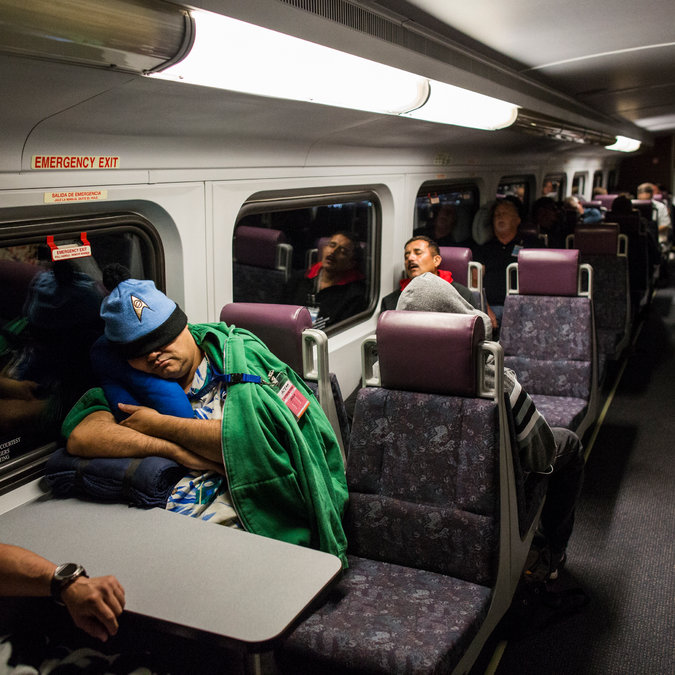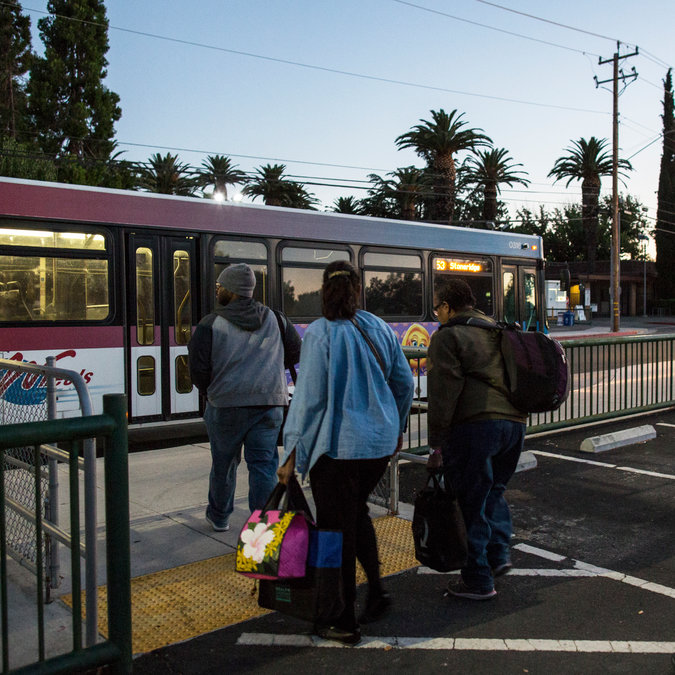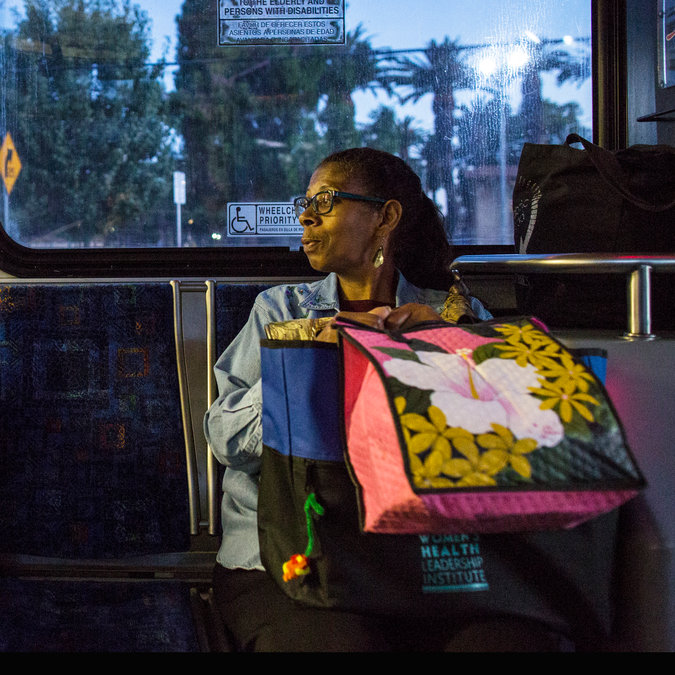“It’s like school,” she said.

ACE ridership has doubled over the past decade, to about 2,500 people a day, though the figure is still dwarfed by the number who commute by car from San Joaquin County to the Bay Area. On that recent early morning, as the train wound toward the Altamont Pass, traffic was already forming on the freeway outside the window.
While drivers sat alert and watched the road, the train looked more like a red-eye flight. Blankets, pillows, earplugs, eyeshades. The few people who were not sleeping distracted themselves with smartphones, laptops and the occasional printed book.
One thing people did not do was talk. Even outside the quiet car, there were few audible conversations.

That was starting to change by the time the train pulled into the Pleasanton station. The sun was rising over a bus that waited on the other side of the station’s parking lot.
Ms. James and a crowd of other commuters crossed the parking lot to the bus, which was headed to the Bay Area Rapid Transit station. As the bus idled and waited for stragglers, a woman urged the driver to get going so she could make her next train.
“It’s amazing how this commute makes infants of adults,” Ms. James said.

Ms. James used to live closer, in Alameda, Calif., about 15 miles across San Francisco Bay from her work. But three years ago, after a developer bought her building and evicted Ms. James and her neighbors, she moved to Stockton.
Stockton has more for the money: Ms. James pays $1,000 a month in rent for her three-bedroom house, compared with $1,600 for the one-bedroom apartment she had in Alameda. She can work from home some of the time, so she now has a home office with a desk and a computer, as opposed to the “home corner” she had in her apartment.
Advertisement
Continue reading the main story
The trade-off is a brutal commute.

Long commutes are a byproduct of the region’s tech boom, which has given rise to a full-blown housing crisis. As home prices have escalated beyond middle-class reach, areas far inland have become an oasis of (relative) affordability. Ms. James wakes up in a city where the median home price is below $300,000, according to the online real estate database company Zillow. Prices rise steadily along her commute until she gets off her last train in San Francisco, where a typical home costs more than $1 million.
As more people move inland, home prices are rising faster in the Central Valley than anywhere else in the state: In San Joaquin County (which includes Stockton) and neighboring Merced County, prices are up about 12 percent in the last year.
Continue reading the main story
Article source: https://www.nytimes.com/2017/08/17/business/economy/san-francisco-commute.html?partner=rss&emc=rss
Speak Your Mind
You must be logged in to post a comment.